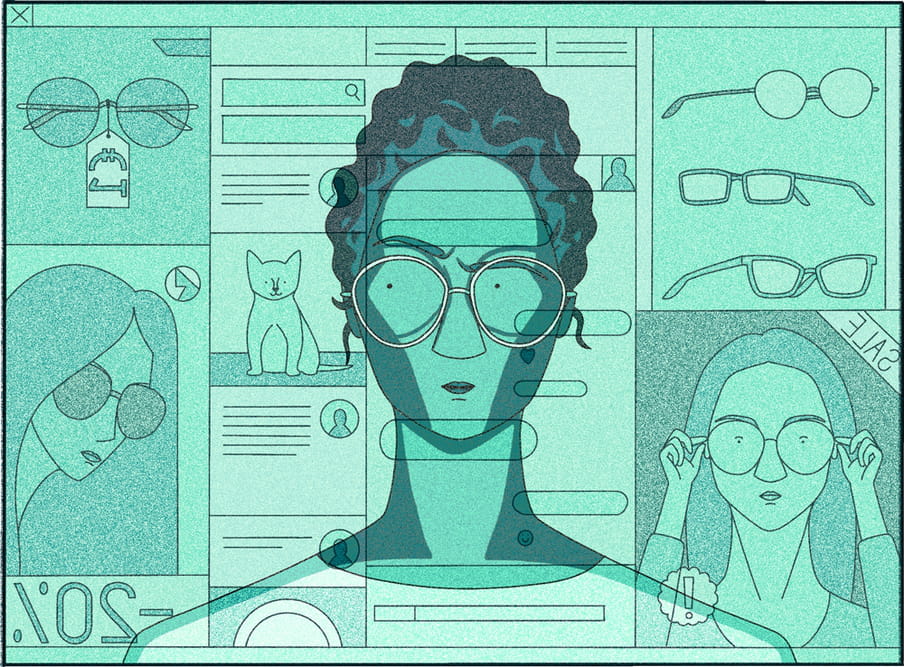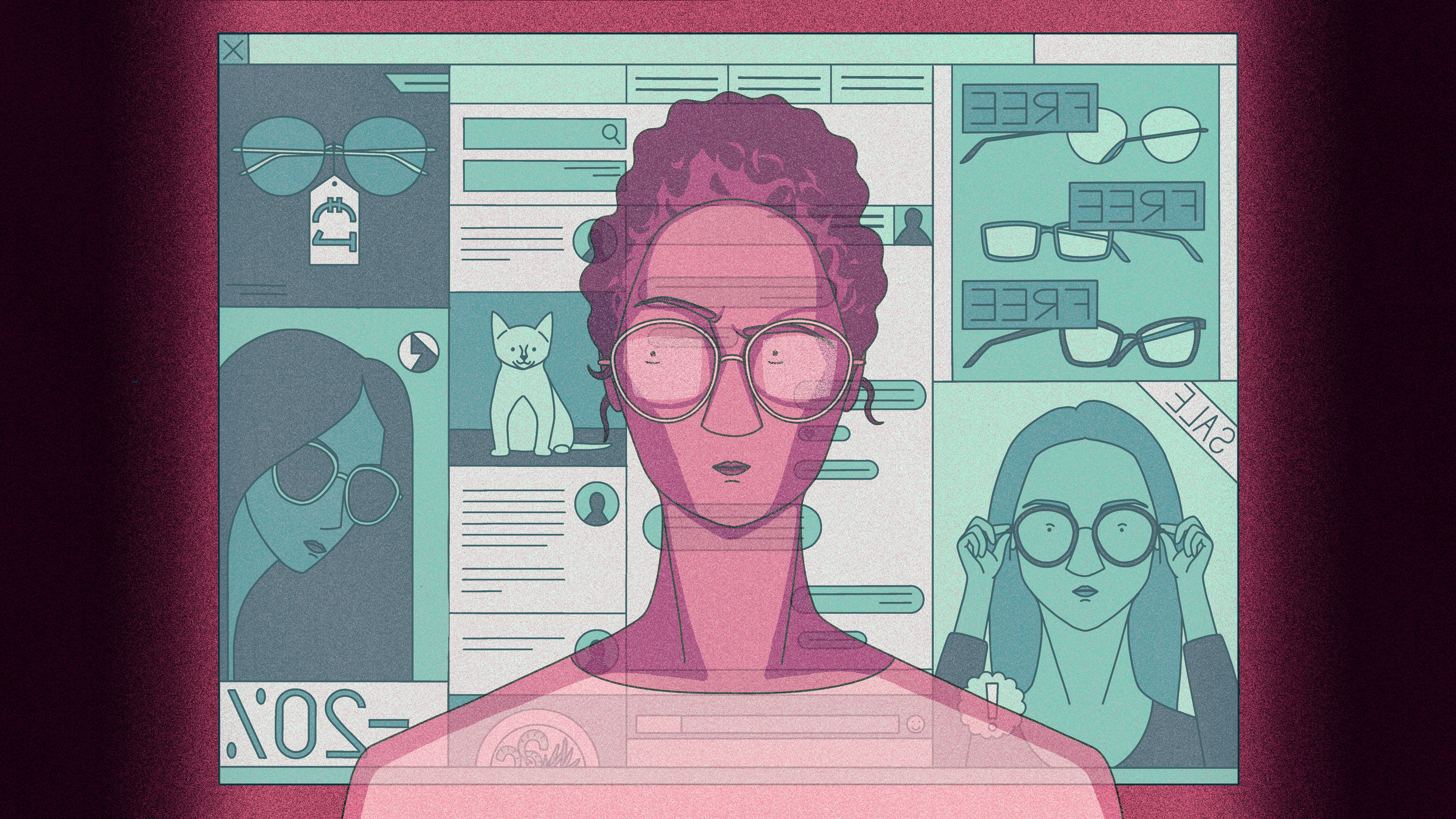On 29 January 2017, the American online advertising world congregated at the upmarket Diplomat Beach Resort in Hollywood Beach, Florida. The Interactive Advertising Bureau (IAB) had invited 1,000 industry leaders to discuss the future of the advertisement industry over cocktails and canapés. All the big players were there.
According to the advertisers themselves, the future was bright. Just a few weeks prior, the IAB had issued a press release: “The momentum of advertising in mobile, digital video, and other innovative formats is undeniable … These record-setting third quarter revenue figures reflect marketers’ trust in the internet’s power to connect with today’s audiences.”
Then, arguably the biggest player of them all got on stage.
Marc Pritchard, chief brand officer at Procter & Gamble (P&G), oversees a marketing budget of more than $10.5bn, making his company the largest advertiser in the world – both on- and offline.
After a short preamble about the blessings advertising had brought to humankind, the 56-year-old head of household brands such as Pampers and Gillette got down to business. “Let’s face it,” Pritchard told the conference, “all of us in this room bombard consumers with thousands of ads a day, subject them to endless ad load times, interrupt them with pop-ups, and overpopulate their screens and feeds with just plain bad work.”
He continued: “I mean, is it any wonder that adblockers are growing 40%? How many people are really seeing these ads?”
Pritchard spoke in the way an old school friend might at your wedding, but there were no best-man jokes to lighten the mood. The online advertising market, he said, had turned into an opaque, fraudulent business, where “crappy advertising” was rampant and good money went to waste. For too long, advertisers had blindly believed the story of this brave new wonderful world. They had bought into the “somewhat delusional thought that digital is different”.
“But we’ve come to our senses … The days of giving digital a pass are over.”

Not ‘mad men’, just ‘mad metrics’
Digital was going to be the revolution the ad industry had been craving. The Don Drapers of the world – the "mad men" – had been creative enough. They just hadn’t been efficient enough. As marketing pioneer John Wanamaker put it a century and a half ago: “Half the money I spend on advertising is wasted; the trouble is I don’t know which half.”
Online advertising was meant to herald the post-Wanamaker era, when advertisers would be able to know exactly what money was going where. The advent of clicks and likes was supposed to make everything measurable – including our innermost desires.
Digital advertising was meant to turn capricious consumers into easily influenced customers
Capricious consumers would be replaced by easily targeted IP addresses, turning users into easily influenced customers. At long last, advertisers would know exactly who was looking at their ads and who made a purchase. Once and for all they would know which half of their advertising budget had been wasted and which part had been well spent. And consumers would finally be shown only ads that were truly of interest to them.
In the first piece in this series, my colleague Jesse and I described how hard – basically impossible – it is to determine the effectiveness of online advertisements. The advertising effect – people see your ad, and that’s why they start clicking, buying, registering, downloading – is barely measurable, and even when it is, the effects are infinitesimal.
In short, “mad men” didn’t become “math men”. The whole thing just became “mad metrics”. There are the four problems plaguing the online advertising industry:
1. Fraud is rampant
In 2018, four men became multi-millionaires after carrying out a sophisticated plan. They started by buying dozens of existing Android apps that people were actually using – games, a selfie app, a torch, that sort of thing. To conceal the fact that these apps belonged to one and the same owner, they incorporated them into letter-box companies in Israel, Serbia, Germany, Bulgaria and Malta. After analysing their users’ behaviour, they hired a bunch of techies to build bots mimicking this behaviour perfectly. They then used special servers to direct the bots to the apps, which made it look as though app use and traffic were ballooning.
Then came the final step of their plan: cashing in. The apps ran advertisements, and advertising rates increased as traffic increased. The apps had been installed a total of 115m times, earning the four men tens of millions of ad dollars.
This story is just one of many. The bag of tricks of advertising crooks is filled with such impressive methods as ad injectors and click farms, domain laundering and conversion fraud. Their digital thievery is predicated upon the creation of fake visitors, clickers, viewers, and bogus buyers.
Fraudsters are so good at this simulation business, and their shenanigans are so hard to trace, that billions flow from advertisers to the creators of fraudulent bots and deceptive code.
When it comes to the extent of ad fraud, conclusive figures are hard to come by. Estimates range from $6.5bn to $150bn a year (that’s more than half the total online advertising budget). The World Federation of Advertisers, a global association representing many major brands, expects that five years from now, between $50bn and $150bn will be lost to fraud annually.
No surprise then that Pritchard – the advertising world’s head honcho – was so upset about ad fraud: he and his colleagues are the victims here.
Digital advertising fraudsters are so good at what they do that billions flow from advertisers to the creators of fraudulent bots and deceptive code
Google, Facebook and thousands of middlemen are not. When it comes to these players, in fact, everybody wins. When an advertiser pays for traffic, views and clicks, the platforms and brokers also get their share. This means that they hardly have any incentive to tackle fraud.
2. Fallible measurement tools
Let’s say you’re on the Amtrak train from Penn Station to Boston. You’re looking out the window, gazing at the landscape as it passes you by. Somewhere in Connecticut, the train wizzes past a billboard in the middle of a field. In that one second, you see colours and contours flashing by – and not much else.
Was it a man or a woman on there? Was it an advert for cola or potato chips? Was it even an ad, or could it just as easily have been a tractor?
In the online advertising market, that one second is considered a “view”. According to the MRC standard, the most widely used guideline in the industry, an ad counts as “seen” when at least 50% of it has been seen by a person for at least one second.
That means that more than half of an ad’s pixels must have been loaded onto someone’s screen for more than a second. For video advertisements, the minimum is all of two seconds.
If a half-loaded advertisement shows up on the screens of a thousand people for more than one second, this counts as a thousand views. If a million people visiting a website were exposed to a flickering, half-loaded video advert for two seconds, it would count as a million views.
In other words, the bar is extremely low.
An additional problem is that advertisers rely on third parties for their metrics. It’s Facebook and Google themselves who tell their advertisers how many views and clicks their ads have generated. Pritchard refers to this as “grading their own homework,’’ before adding: "incredibly, we’re still tolerating it and accepting excuses.”
At present, Facebook has several lawsuits against it that revolve around metrics. Advertisers and publishers believe that the company has been fooling them for years. After all, you pay Facebook based on its own reporting. If that reporting is false, you will have paid too much.
In the past two years, Mark Zuckerberg’s company has admitted that it has, at times, overstated its numbers – including on how many people watch videos and how many people click on ads on its platform. Advertisers have no way of knowing that the provided figures are true.

3. Advertisers have little control over where ads appear
In the old days, advertisers would buy ad space in a newspaper, on TV or on the radio because they wanted to target a specific audience. If you were a motorcycle brand, for instance, you might place an ad in a football magazine. Today, you can simply buy the eyeballs of football fans aged between 20 and 60 on, say, dailymail.co.uk, espn.com, or breitbart.com.
Sounds convenient, but here’s the catch: advertisers, brands and marketers don’t get to decide where their ads appear. For the most part, online ad placement is an automated process. In Google’s advertising network, for example, your ad might end up on two million different websites and 650,000 different apps. Combine that with the tangle of ad tech companies acting as intermediaries between you and your audience, and it’s hard to keep track of what’s going on.
It turned out that ads from major advertisers, including Amazon, Microsoft and Motorola, had appeared in child pornography chat groups through Facebook’s and Google’s automated advertising systems
This means your ads might end up on sites or in apps that you, as an advertiser, don’t want to have anything to do with. Case in point: recently, big advertisers such as AT&T, GlaxoSmithKline and Verizon all discovered that their ads had appeared – fully automated – in racist YouTube videos.
And late last year, it turned out that ads from major advertisers, including Amazon, Microsoft and Motorola, had appeared in child pornography chat groups through Facebook’s and Google’s automated advertising systems.
JPMorgan Chase, a large American bank, discovered that its ads appeared on 400,000 different websites every month.
4. People just don’t want to see ads
Last but not least, the biggest puncture in the online advertising bubble: adblockers. We’ve installed software to keep ads from appearing on our screens en masse. According to the Reuters Institute, which surveyed 74,000 people in 37 countries, 27% of all internet users used an adblocker in 2018 – and that number is rising.
The American author and activist Doc Searls calls adblockers “the biggest boycott in human history”. They prove beyond a doubt that, when given a choice, most of us would rather give up looking at online ads at all.
Why? Because ads are annoying, first of all. To most adblock users, ads are clutter and a huge distraction. Installing an adblocker tends to upgrade your internet experience tremendously: websites load faster and no hideous pop-ups blink in the corner of your eye, demanding your attention.
In addition, adblockers make going online safer and more privacy friendly. That’s because many adblockers also keep away the rubbish that usually comes with ads: viruses – adware or malvertising, as they’re called – as well as trackers that register your online behaviour, link it to other data, or sell it to third parties.
For the advertising industry, the massive use of adblockers is bad news. They make online advertising even less effective. If billions of people use the internet with a blindfold on, there are fewer and fewer eyeballs left to measure – let alone clicks or conversion.

Don’t believe the hype
Pritchard ended his 2017 talk with a call to action: time had come to clean up the online advertising world, which was “murky at best and fraudulent at worst”. He said it was high time to tackle fraud, to standardise metrics, and to enable advertisers to have metrics verified by independent parties.
Pritchard promised that from now on, P&G would only work with parties that met its requirements: “We vote with our dollars.”
That same year, P&G cut its online advertising budget by $200m to keep ads from showing up in ways and places “that do not meet [their] standards and requirements”. The manufacturer of shampoos and chocolate bars said later that the decision hadn’t hurt the bottom line at all. On the contrary, sales showed a 2% increase. The company claimed that this only proved that some of their ads had been seen by bots instead of people.
Other advertisers followed P&G’s lead. Some decided to work with fewer ad tech companies as well. Facebook and Google took measures to improve their metrics and to provide more transparency.
Even so, the industry’s problems are persistent. The use of adblockers increases every year. The ad fraud mafia is becoming more resourceful. Adobe discovered that as much as 28% of all internet traffic is “non-human”, which means pure and proper metrics are a pipe dream. Contaminated data are often treated as “clean” – that is, they’re counted as a click or a view, even if the thing doing the clicking and viewing is not human.
Call it the paradox of the online advertising world: metrics are sacred, but proper measurement is impossible
But as long as those metrics are all we’ve got, the online advertising industry will continue to revolve almost entirely around those same metrics. That’s how Google, Facebook and countless other advertising companies make their money.
Call it the paradox of the online advertising world: metrics are sacred, but proper measurement is impossible.
And all the big players know it because the signs are crystal clear. But the story of a revolutionary brave new world – the world where “digital is different” – continues to hold sway.
“Don’t be fooled by the myths,” Pritchard told his colleagues at the conference.
It’s still very wise advice.
Maurits and Jesse worked together on this piece, but the story is told by Maurits. This article was first published in Dutch on De Correspondent. It was translated by Nephtalie Demei.
Correction: the IAB is the Interactive Advertising Bureau, not the International Advertising Bureau.
Dig deeper
 The new dot com bubble is here: it’s called online advertising
In 2018 $273bn was spent on digital ads globally. We delve into the world of clicks, banners and keywords to find out if any of it is real. What do we really know about the effectiveness of digital advertising?
The new dot com bubble is here: it’s called online advertising
In 2018 $273bn was spent on digital ads globally. We delve into the world of clicks, banners and keywords to find out if any of it is real. What do we really know about the effectiveness of digital advertising?



